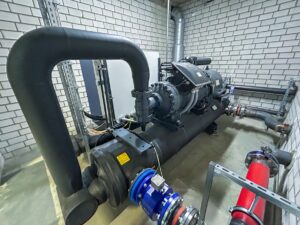Geothermal Energy: Trend Theme – Now Included in IFAT Entsorga 2012
Geothermal energy is carbon-neutral, it’s quiet and it doesn’t smell. The heat contained in the earth below our feet can be used directly as heating energy or process heat. Or it can be transformed into electricity.
Geothermal power stations also have the capability of supplying baseload power. In principle therefore, they could replace coal or nuclear power stations. All of which, according to Deutsche Bank Research, are factors which mean geothermal energy will have an important role to play in a brighter energy and climate future.
Geothermal energy is a very topical theme. And for this reason it is also being included in the programme of the world’s leading environmental technology trade fair IFAT Entsorga, which takes place from 7 to 11 May 2012 in Munich. It is also being spotlighted in a congress on biomass and geothermal energy which is to be held during IFAT Entsorga, on 9 and 10 May. The congress, hosted in the International Congress Centre Munich (ICM), adjacent to the exhibition centre, is being organised by Enerchange, an agency for renewable energies.
Europe leads the way in the direct use of geothermal heat. According to the latest figures from the European Geothermal Energy Council (EGEC) the 27 EU Member States have a combined installed plant capacity of a good 23,000 megawatts (MW), generating around 65,000 gigawatt-hours (GWh) of heat per year. Germany ranks third for installed capacity, after Sweden and Norway.
Last year 526 power stations around the world delivered over 67,000 GWh of electricity from geothermal sources. The USA has the largest number of such power stations, at 209. In areas where there is a high level of volcanic activity, geothermal energy plays a particularly large part in the generation of electricity. This is the case, for example, in the Philippines, Indonesia, New Zealand and Mexico. Very hot temperatures are readily available in those countries. Corporate consultants Frost & Sullivan, however, predict that new technologies, such as hot dry rock processing, will make it possible to exploit geothermal energy for power generation all over the world. "The geothermal market is poised to expand rapidly in the short and medium term," says Tomasz Kaminski, an analyst at Frost & Sullivan.
In parallel with technological advances, governments in many countries are launching subsidised programmes and policies to support the growth of geothermal energy. Indonesia, for example, according to Germany Trade and Invest (foreign trade and inward investment agency), aims to become the world’s largest generator of geothermal power: it’s ambitious target is an overall capacity of 9,500 megawatts (MW) by 2025. According to plans by the Indonesian government, new geothermal capacities amounting to almost 4,000 MW will come on stream by 2014. A reported investment of around 12 billion US dollars is needed for this.
The countries in Europe that have the best potential for tapping into a geothermal boom , according to a survey among experts by trend:research, are Germany, Iceland, Italy, Switzerland, Turkey and Hungary. The opinion researchers also predict that competition will increase, for example among drilling companies, in the light of the expected expansion of this market.
The rising importance of geothermal for heating requirements in private households and government institutions is expected to give further impetus to the market in heat pumps. The German renewable-energy association, Bundesverband Erneuerbare Energie, predicts that by 2020 annual sales of heat pumps will almost treble in comparison to today’s level (at 200,000 p.a.).
Companies involved in this segment have a chance at IFAT Entsorga to present their offering at a joint stand on geothermal energy.
Source: Messe München GmbH




